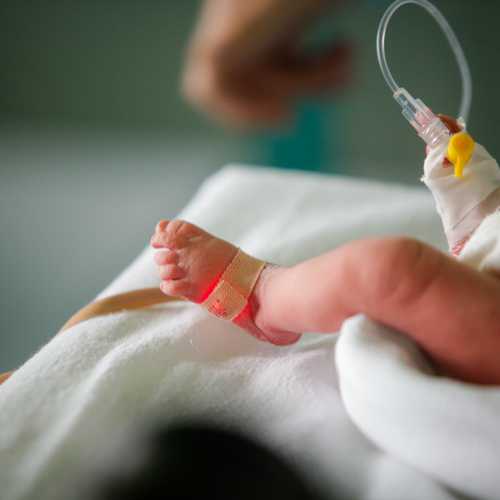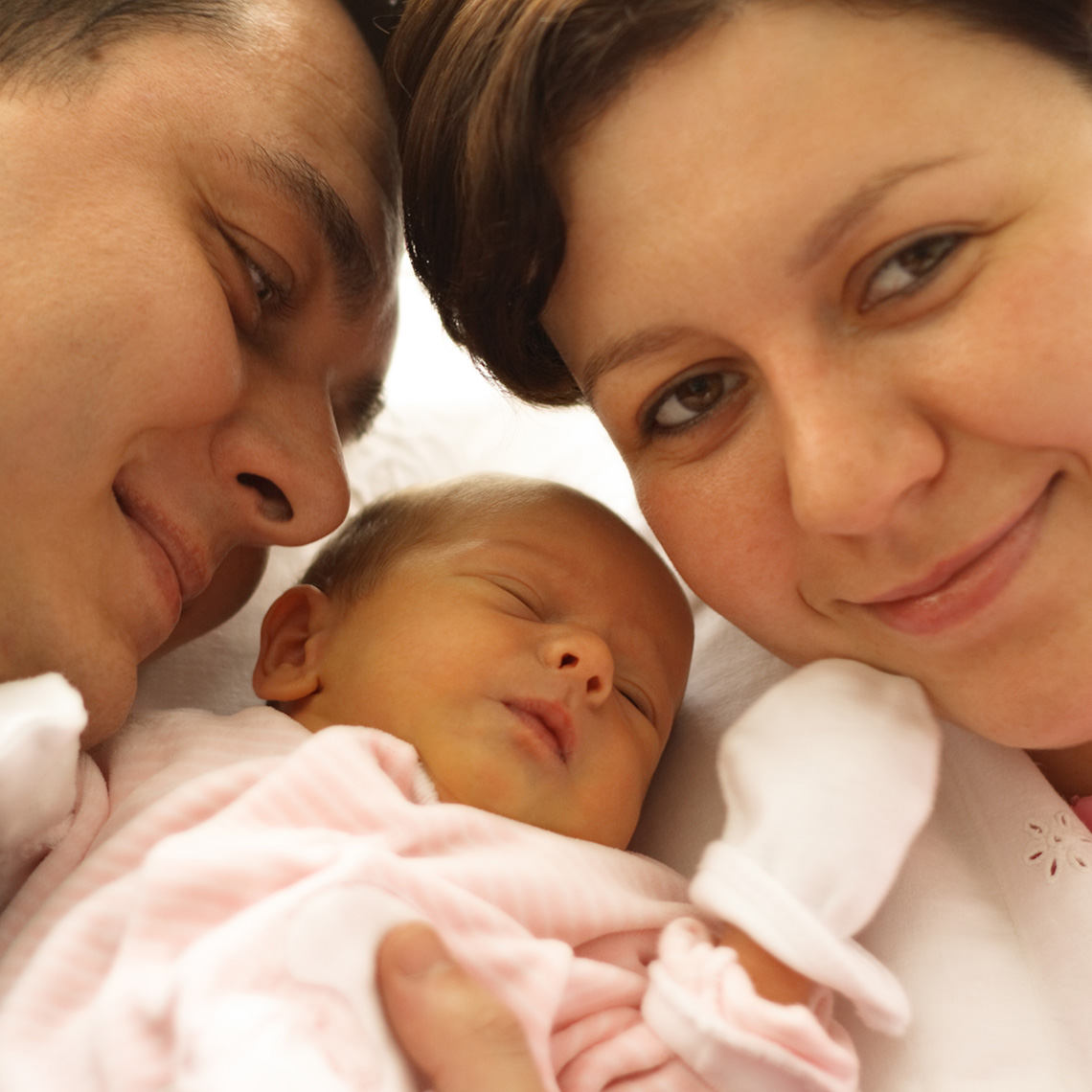Guideline
OB Guideline 12: Prevention of Group B Streptococcal Early-onset Disease in Newborns
All obstetrical clinicians should adhere to a screening culture-based obstetrical protocol for prevention of early-onset neonatal disease due to Group B streptococcus (GBS).1 This protocol requires that GBS-specific cultures be performed during the antepartum period and that intrapartum antibiotics be administered to obstetrical patients based on culture data. If culture results are not available, intrapartum antibiotics should be administered according to defined risk factors.
Adherence to this culture-based protocol requires the following:
- Antepartum GBS-specific vaginal-rectal cultures are performed between 36 0/7 and 37 6/7 weeks gestations—or <5 weeks prior to a planned delivery—on all birthing people except those who require intrapartum antibiotics for prevention of neonatal GBS disease.
- Patients with a prior infant who developed GBS neonatal disease and/or urine cultures positive for GBS in any amount during the pregnancy should receive intrapartum antibiotics and do not need GBS cultures performed.
- Patients with positive screening cultures during a previous pregnancy should be recultured during subsequent pregnancies and managed on the basis of the current culture.
- Patients who have had GBS cultures performed more than 5 weeks prior to anticipated delivery (whether positive or negative) should have a repeat screening culture performed.
- Patients who have had a culture obtained as part of management for possible early delivery do not need to have the culture repeated for recurrent episodes of potential preterm delivery if initial culture performed within 5 weeks was positive. If initial culture was negative, culture for GBS should be repeated.
- Cultures are obtained with a swab from the lower vagina (near the introitus) and rectum (through the anal sphincter). Intrapartum antibiotics are administered according to results of these cultures.
- With appropriate instruction, culture swab may be self-obtained by patient.
- Swab should be incubated in selective broth media prior to performing standard culture.
- All specimens should be labeled as from a pregnant patient.
- If penicillin allergy has been documented, the specimen should be labeled as such and sensitivity to clindamycin determined.
- Samples for urine culture should also be labeled as from a pregnant patient to facilitate identification of GBS in any amount and to facilitate antimicrobial sensitivity testing in the case of penicillin allergy.
NOTE: GBS in the urine does not need to be treated antepartum unless a quantitative culture shows >/= 100,000 CFU of GBS as a single organism.
- If results of cultures are not available, intrapartum antibiotics should be administered to all patients with any of the following risk factors:
- preterm labor (<37 weeks gestation)
- rupture of membranes ≥18 hours, or
- intrapartum temperature ≥100.4° F orally (100° F axillary).
If intra-amniotic infection is suspected, broad-spectrum antibiotic therapy that includes an agent known to be active against GBS should replace GBS prophylaxi
- Special circumstances for administration of intrapartum antibiotics to patients whose culture results are not available:
- If available, point-of-care (POC) Nucleic Acid Amplification Testing (NAAT) can be performed provided that enrichment of swab in selective broth media is utilized. If NAAT is positive, antibiotics should be administered. If NAAT result is negative, antibiotics should be administered according to risk factors.
- If the patient has a history of positive GBS testing in an immediately previous pregnancy, they may choose to have antibiotics administered after discussion with their health care provider.
- Intrapartum antibiotics should be administered to patients with either of the following (regardless of culture results):
- previous GBS infected neonate, or
- GBS bacteriuria (of any magnitude of colony count) at any time during the current pregnancy.
- If a birthing person at term with a positive GBS culture ruptures their membranes without signs of labor, no more than 12 hours should pass prior to consideration of steps to effect delivery and antibiotic administration. Results of GBS culture should not affect route of delivery.
- Obstetrical procedures should not be delayed solely in order to achieve at least 4 hours of antibiotic administration but rather timing should be individualized.
- Patients with negative cultures within five weeks of delivery do not require intrapartum antibiotic prophylaxis for GBS even if obstetrical risk factors develop. Intrapartum temperature ≥ 100.4° F orally (100° F axillary) should prompt consideration for use of intrapartum antibiotics regardless of concerns regarding GBS prophylaxis.
- At more than five weeks after Group B Strep testing if repeat testing has not been done, intrapartum management should be as for GBS status unknown.
- Patients undergoing a planned cesarean delivery prior to the onset of labor and membrane rupture do not require intrapartum antibiotic prophylaxis for GBS, regardless of GBS culture results.
- Penicillin is the preferred antibiotic for this purpose; ampicillin is alternative management but may result in an increased rate of ampicillin resistance of E.coli in the neonate. For penicillin-allergic individuals, acceptable antibiotics include:
- cefazolin: (preferred alternative except for patients at high risk for anaphylaxis);
- clindamycin and erythromycin: (for patients at high risk for anaphylaxis, and whose susceptibility is known); and
- vancomycin: (for patients at high risk for anaphylaxis, and whose GBS is not susceptible to clindamycin or if susceptibility is unknown).
Vancomycin should be administered according to weight-based guidelines and should take renal function into consideration. Administration should be every 8 hours, not to exceed 2G per dose, and the length of administration time will vary according to dose.
- Antepartum skin testing for penicillin allergy can be considered. The majority of patients who have a report of penicillin allergy will tolerate penicillin. If type I hypersensitivity is not suggested by skin testing, intrapartum antibiotic treatment alternatives to penicillin will not be needed and the results may impact future health care.
Footnotes
- ACOG Committee on Obstetric Practice. Prevention of Group B Streptococcal Early-Onset Disease in Newborns. Committee Opinion Number 797 February 2020, published on-line January 23, 2020.
| << Guideline 11 | Web Guideline Home Page | Guideline 13 >> |
More CRICO Guidelines or Algorithms
Neonatal Encephalopathy Guidelines


General Informed Consent Guidelines

Challenge: Take the OB Clinical Guidelines Test

